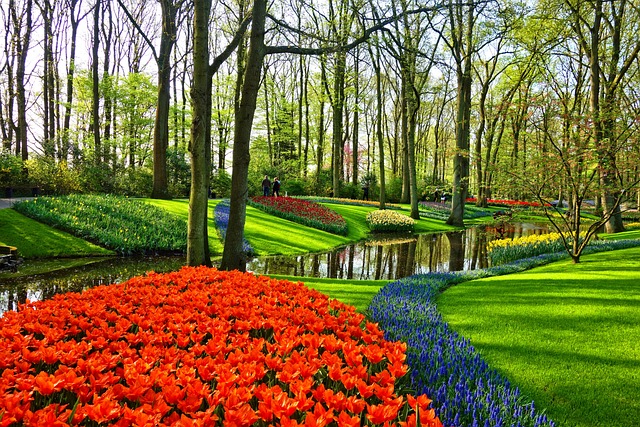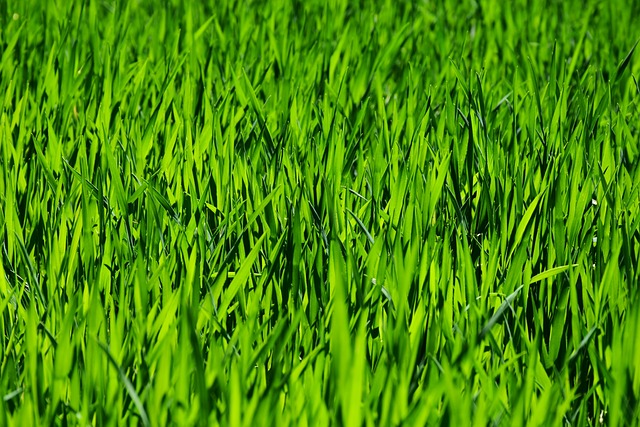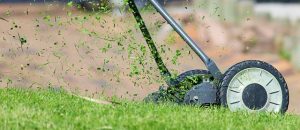Mastering Mulching and Edging: Elevate Your Lawn’s Appeal through Expert Care Techniques
Lawn Care and Landscaping are significantly enhanced by the practice of mulching, which plays a crit…….

Lawn Care and Landscaping are significantly enhanced by the practice of mulching, which plays a critical role in maintaining soil health, conserving moisture, and controlling weeds. A layer of mulch two to four inches deep is recommended for optimal benefits without drawbacks. Additionally, precise edging along the lawn's boundaries with adjacent features is crucial for aesthetic appeal and practical functionality. Regular mulch refresh and frequent edging are essential for a well-maintained lawn that reflects professional Lawn Care and Landscaping standards. These practices not only improve soil quality and moisture retention but also provide a clear demarcation between the lawn and other areas, preventing grass encroachment and protecting against soil compaction. Edging and mulching together create an environment conducive to a lush, healthy lawn that can elevate your home's curb appeal. Combining these techniques with routine mowing and watering will result in a standout lawn that is both visually appealing and well-maintained.
Maintaining a lush, vibrant lawn is a cornerstone of picturesque landscaping. A key part of this upkeep involves smart mulching and precise edging techniques. This article delves into the intricacies of these practices, offering homeowners a comprehensive understanding of how they contribute to lawn care and landscaping. We’ll explore the benefits of mulching for soil health and plant growth, followed by the role of edging in defining lawn edges for a clean, manicured appearance. With actionable steps outlined in our guide, your grass will thrive while your property’s curb appeal soars.
- Understanding the Basics of Mulching in Lawn Care and Landscaping
- The Importance of Edging for a Well-Maintained Lawn in Your Landscaping Efforts
- Step-by-Step Guide to Effective Mulching and Edging Practices in Lawn Maintenance
Understanding the Basics of Mulching in Lawn Care and Landscaping

Mulching is a fundamental aspect of effective lawn care and landscaping, serving to promote soil health, conserve moisture, and suppress weeds. By applying a layer of organic material over the soil surface, mulching helps to decompose naturally, enriching the soil with valuable nutrients as it breaks down. This process not only enhances soil structure but also aids in maintaining consistent soil moisture levels by shielding the ground from direct sunlight and wind. For homeowners and landscapers alike, understanding the type of mulch to use is crucial; options like wood chips, straw, or grass clippings each offer different benefits and should be selected based on their suitability for your lawn’s specific conditions and the desired aesthetic outcome. Additionally, the depth of the mulch layer plays a significant role in its effectiveness; typically, a 2 to 4-inch thickness is recommended to reap the most benefits without causing issues like nutrient imbalances or hindering grass growth. Regularly refreshing the mulch throughout the growing season ensures that lawn care and landscaping efforts are both efficient and environmentally friendly, contributing to a lush, healthy lawn.
Proper edging is often overlooked but is equally important in the context of lawn care and landscaping. It defines clear boundaries between the lawn and garden beds or hardscapes like walkways or driveways. This demarcation not only enhances the visual appeal of your landscape design by providing crisp, clean lines but also helps to prevent grass from encroaching on paths or flowerbeds, and vice versa. Edging can be achieved through various methods, including the use of garden edgers, spades, or even specialized tools for curved areas. The choice of edging tool will depend on the type of lawn, soil composition, and the precision required. Regular edging maintains the integrity of your landscaping design while making mowing and maintenance tasks more manageable. When combined with thoughtful mulching practices, edging becomes part of a holistic approach to lawn care and landscaping that keeps your outdoor space looking its best.
The Importance of Edging for a Well-Maintained Lawn in Your Landscaping Efforts

Mulching serves a critical role in maintaining soil moisture and minimizing weed growth within your lawn, but the benefits of lawn care extend beyond just the grass itself. Edging is an often overlooked yet integral component of a well-maintained lawn, playing a pivotal role in the overall aesthetic and health of your landscaping efforts. By creating a clear, defined border between your lawn and garden beds, walkways, or driveways, edging not only enhances the visual appeal of your property but also prevents grass from encroaching on other areas, which can lead to turf competition for resources like sunlight, nutrients, and water. This demarcation ensures a manicured look, with clean lines that reflect meticulous lawn care and landscaping practices.
Furthermore, edging can help maintain the integrity of your lawn’s surface by preventing soil compaction from vehicles or foot traffic. This protection allows for better air and water circulation in the soil, which is crucial for grass health and growth. Regular edging, in conjunction with strategic mulching to maintain soil temperature and moisture levels, becomes a cornerstone of effective lawn care, contributing to a lush, green space that is both functional and visually pleasing. Landscaping professionals often emphasize the importance of these practices as they are fundamental to achieving a polished and well-kept lawn that elevates the overall curb appeal of your home.
Step-by-Step Guide to Effective Mulching and Edging Practices in Lawn Maintenance

Maintaining a healthy, vibrant lawn requires consistent care and attention to detail. Mulching and edging are essential practices in effective lawn maintenance that can significantly enhance the appearance and health of your turf. Mulching improves soil quality, conserves moisture, and suppresses weeds, all of which contribute to a thriving lawn. To begin, select organic mulch like shredded bark or compost, as these break down over time, enriching the soil with essential nutrients. When applying mulch, spread it evenly around your plants, taking care not to pile it against plant stems to prevent rot and decay. Ensure that the layer of mulch is about 2-3 inches thick for optimal benefits.
Edging, another critical aspect of lawn care and landscaping, defines the boundary between your lawn and garden beds or sidewalks. A clean edge helps maintain a manicured look and prevents grass from overtaking adjacent areas. To edge effectively, use a half-moon edger or a spade to create a distinct line along paths, driveways, or flowerbeds. Regularly scheduled edging sessions will keep your lawn’s edges crisp and neat, deterring unwanted grass encroachment and making your overall landscaping design more pronounced and tidy. Combining these mulching and edging practices with regular mowing and watering routines will elevate your lawn care and landscaping efforts, resulting in a beautifully maintained lawn that’s the envy of the neighborhood.
In summary, incorporating mulching and edging into your lawn care and landscaping regimen offers substantial benefits for maintaining a lush, healthy lawn. Mulch plays a pivotal role in retaining soil moisture, suppressing weeds, and improving the overall health of your grass. Edging, on the other hand, delineates lawn edges neatly, preventing grass from overtaking garden beds and walkways, which contributes to a well-groomed aesthetic. By following the step-by-step guide outlined in this article, you can effectively integrate these practices into your routine for enhanced lawn care and landscaping outcomes. With consistent application, your efforts will be rewarded with a landscape that not only stands out in your neighborhood but also thrives throughout the seasons.







